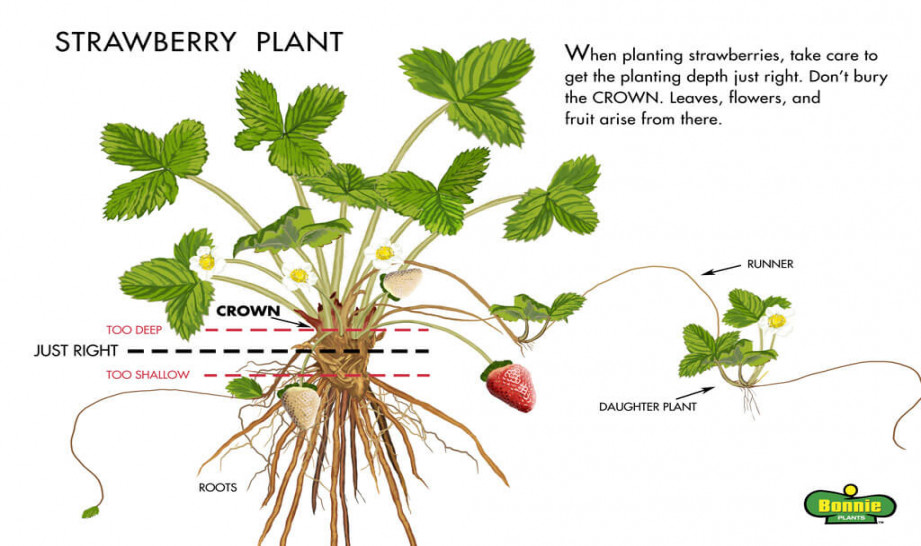Expert Strawberry Gardening Tips: Growing the Best Berries
Introduction
When it comes to gardening, there is nothing quite as satisfying as growing your own fruits and vegetables. One of the most popular fruits to grow is strawberries. Not only are they delicious, but they are also easy to grow. In this article, we will provide you with expert strawberry gardening tips to help you grow the best berries possible.
Why Grow Strawberries?
Strawberries are not just a delicious fruit, they are also packed full of nutrients that are great for your health. They are high in vitamin C, fiber, and antioxidants. Growing your own strawberries means that you can enjoy fresh berries that are free from harmful pesticides and chemicals.
Types of Strawberries

There are two main types of strawberries: June-bearing and everbearing. June-bearing strawberries produce a large crop of berries in late spring or early summer. Everbearing strawberries produce a smaller crop in the spring and fall. When choosing which type of strawberries to grow, consider how much space you have available and when you want to harvest your berries.
Choosing the Right Variety
When selecting which variety of strawberry to grow, consider the climate and soil conditions in your area. Some varieties are better suited for colder climates, while others thrive in warmer climates. Some popular varieties include:
– Albion: a high-yield, everbearing variety that is disease-resistant
– Chandler: a popular June-bearing variety that is known for its large berries
– Seascape: an everbearing variety that produces large, sweet berries
Preparing Your Garden
Choosing a Location
When selecting a location for your strawberry garden, choose an area that receives full sun for at least six hours a day. Strawberries also prefer well-draining soil, so avoid areas that are prone to standing water.
Soil Preparation
Before planting your strawberries, prepare the soil by removing any weeds and adding compost or aged manure. Strawberries prefer slightly acidic soil with a pH between 5.5 and 6.5.
Planting
Plant your strawberries in the early spring or fall, spacing them 12-18 inches apart. Be sure to plant them at the same depth that they were growing in their nursery pot. Water your strawberries well after planting.
Caring for Your Strawberry Plants
Watering
Strawberries need consistent moisture to produce healthy berries. Water deeply once a week, or more often during hot, dry weather.
Fertilizing
Fertilize your strawberries with a balanced fertilizer once a month during the growing season. Avoid fertilizers that are high in nitrogen, as this can result in leafy growth at the expense of fruit production.
Pruning
After your strawberries have finished producing fruit, prune the plants by removing any dead or diseased leaves and runners. This will help the plants to focus their energy on producing healthy berries the following year.
Pest and Disease Control
Keep an eye out for pests such as slugs, snails, and aphids, and treat them promptly as necessary. To prevent disease, avoid overhead watering and remove any diseased plants as soon as possible.
Harvesting Your Strawberries
Timing
Harvest your strawberries when they are fully ripe. They should be bright red and slightly soft to the touch. Be sure to harvest your berries every two to three days to prevent them from becoming overripe.
Storage
Store your strawberries in the refrigerator for up to one week. Be sure to wash them just before eating to prevent spoilage.
FAQs
1. How many strawberries can I expect to harvest?
The amount of berries you can harvest will depend on the size of your garden and the variety of strawberry you choose. On average, a single strawberry plant can produce up to one quart of berries per season.
2. How long do strawberry plants last?
Strawberry plants can last for up to five years with proper care and maintenance.
3. Can strawberries be grown in pots?
Yes, strawberries can be grown in pots or containers. Be sure to choose a container that is at least 12 inches wide and deep to provide enough space for the roots.
4. How often should I fertilize my strawberries?
Fertilize your strawberries once a month during the growing season with a balanced fertilizer.
5. How do I know when my strawberries are ripe?
Harvest your strawberries when they are bright red and slightly soft to the touch.
6. How can I prevent pests and diseases in my strawberry garden?
To prevent pests and diseases, avoid overhead watering and remove any diseased plants as soon as possible. Keep an eye out for pests such as slugs, snails, and aphids, and treat them promptly as necessary.
Conclusion
Growing your own strawberries is a rewarding and delicious experience. By following these expert strawberry gardening tips, you can grow the best berries possible in your own backyard. Remember to choose the right variety, prepare your soil, care for your plants, and harvest your berries at the right time. With a little patience and care, you can enjoy fresh, homegrown strawberries all season long.
